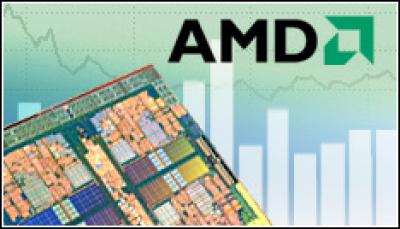A week after Dirk Meyer’s resignation as CEO of Advanced Micro Devices (AMD), the company’s position going forward is essentially to stay the course in the short term, while creating expansion plans farther down the road.
Executives at AMD, speaking during a conference call with analysts and journalists on January 20, said that the immediate goal is to deliver on promises around the company’s Fusion offerings, including the upcoming launch this summer of its “Llano” product line, aimed at notebooks, ultra-thin laptops and desktop PCs.
That will follow the release earlier this month at the 2011 Consumer Electronics Show of AMD’s “Brazos” chips for lightweight laptops and netbooks.
Tablets Under Consideration

Tablets are an area that the company is interested in, according to AMD CFO and interim CEO Tom Seifert. While the company may not have processors designed specifically for ultramobile devices, he said that, as AMD continues to drive up the performance and energy efficiency of its processors while shrinking the size, it will open up new markets.
AMD’s Fusion initiative brings high-end graphics capabilities and x86 CPUs onto a single piece of silicon. AMD calls the chips accelerated processing units (APUs). Siefert called Fusion “arguably the most significant advancement in processor architecture in decades”.
The company has just announced financials for the last quarter 2010, where it saw revenues come in at $1.65 billion (£1 billion), flat from the same period last year. Income was $413 million (£260 million), a significant drop over the $1.29 billion (£811 million) of the fourth quarter 2009, though that was bolstered by a $1.25 billion (£786 million) payment from Intel to settle legal disputes between the two companies.
For the full year, AMD generated $848 million (£533 million) profit on $6.49 billion (£4.1 billion) in revenue, both increases over 2009 figures.
Siefert said the work done in 2010 has set the company up for a strong 2011. “I’ve never been more confident in this company and its capacity to succeed,” he said.
Despite numbers that exceeded analyst expectations, issues that were raised by Meyer’s resignation permeated the analyst call. The company’s board of directors reportedly were unhappy with Meyer’s reluctance to move the company into the booming smartphone and tablet markets, and were concerned about the direction of AMD’s server business.
Siefert said that Meyer, who was given $12 million upon his resignation, had done a good job setting up the company for success, adding that AMD will build on current plans while “accelerating” efforts into new areas. However, he said there would be no wholesale shift.
“To reduce it to just a tablet statement would be wrong and was certainly not the case, and it’s certainly not an indication that we are going to let the focus shift away from what the priorities are in terms of delivering what we promised,” Siefert said.
For now, AMD executives said they are seeing good demand from OEMs for their Fusion APUs, and expect the PC market to grow 10 to 11 percent in 2011. They expect revenue for the first quarter to come in flat to a little down.
AMD is going to find competition for its Fusion APUs. Intel rolled out its “Sandy Bridge” second-generation Core-i processors at CES. These chips also integrate graphics and CPU onto the same die. In addition, Nvidia, AMD’s key competitor in graphics, is teaming up with chip design company ARM Holdings to create its own integrated processors.





